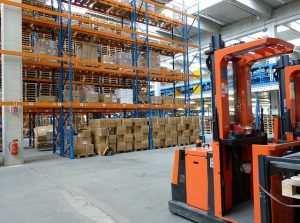
Modern warehouses are more like a warzone with so much going on all at once under one roof. With so many complex operations and so many things moving simultaneously, one thing that often takes a big-time hit is the overall efficiency and productivity.
And that is why warehouses are usually in the lookout of finding ways and means to maximize their productivity by automating manual processes, optimizing workflows as much as possible, and reducing the wastage of time, money, and resources.
But since there are too many things happening in a warehouse, it is straightforward to lose track of all the activities, transactions, and everything else and hence lose out on efficiency and productivity.
The approach is to measure and track the current processes and relevant systems that are in the warehouse and then pick up the areas that can be improved and accordingly introduce process improvements through the use of technology or other means.
However, the challenge is to figure out what works and what does not. To make it easier for you, we will list the top 6 ways of tracking your warehouse’s efficiency and productivity. So, what are these ways and means? Let us find out.
1. Get regular internal audits done.
Getting regular audits done is a perfect way to determine your warehouse’s current standings in terms of standards compliance, inventory, efficiency, productivity, etc.
You need to make sure you are getting a thorough audit done to find out any weak areas and loopholes and thereby devise plans and strategies to overcome them.
In doing so, you will need to take care of the following:
- Make sure you can find out your warehouse’s total capacity versus the throughput
- What is your warehouse workflow and layout? Find out if there is an area that is creating trouble for your workers and machines
- Figure out if your storage areas are easily accessible without any imminent dangers.
- Check if your IT systems are performing the best.
- Ensure that the safety and security of your warehouse are top-notch for this can cause a significant loss to your business and reputation.
2. Define the goals
Once your internal audit is complete, you can then set up a meeting with all your department heads and then start a discussion on the goals for various departments and verticals moving forward.
The goals will give you a measurable target that you can use as a reference or a milestone to achieve with your day-to-day warehouse operations. Once you are clear on the goals and deadlines of these goals, your input data is now ready.
You can use this input data to be fed to your tracking systems or software solutions that you might be using for your warehouse management.
You can update these systems with all kinds of data, such as organizational, inventory tracking, staffing, etc. This would ensure all your processes come under the purview of this tracking system.
3. Set Key Performance Indicators for your workers
This is an essential step towards measuring and tracking your warehouse performance. The performance of your employees will be directly proportional to the performance of your warehouse.
You may have never thought about specifying KPIs for your workers, but if you do, you will be in a better position to track the productivity of the warehouse as a whole. Ensure that the KPIs assigned are custom made and as per the job title and the process involved, so that measuring is fair and realistic.
4. Chart your performance
Once the KPIs are defined, you may now start charting your performance by measuring the metrics versus the goals and for workers their current performances against the KPIs.
This would give you a holistic idea about the health and output of the warehouse in general at any given point in time, and it will leverage decision making in a significant way.
5. Conduct reviews and feedback sessions
Once you have substantial data that you have recorded, you can conduct a monthly or a bi-monthly review with the current statistics so that this data can help you discuss your weak points and eliminate them. A report is critical to remove the hindrances and obstacles that may come up in the path of productivity and business.
6. Use automation solutions and tools
All the steps above can be seamlessly integrated and performed through warehouse management software. ServiceNow Services platforms are well known to handle all such difficult tasks of handling complex warehouse operational data. They are able to provide insights on the performance and the progress of the same.
Conclusion
Though it is difficult to track and manage warehouse efficiency and productivity, using the
right tools such as ServiceNow Services can help in making warehouses smarter, more efficient, and highly productive.
Guest post

Post new comment
Please Register or Login to post new comment.